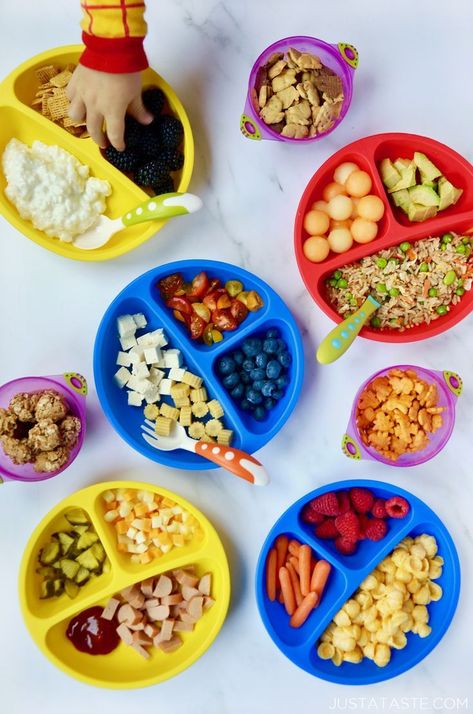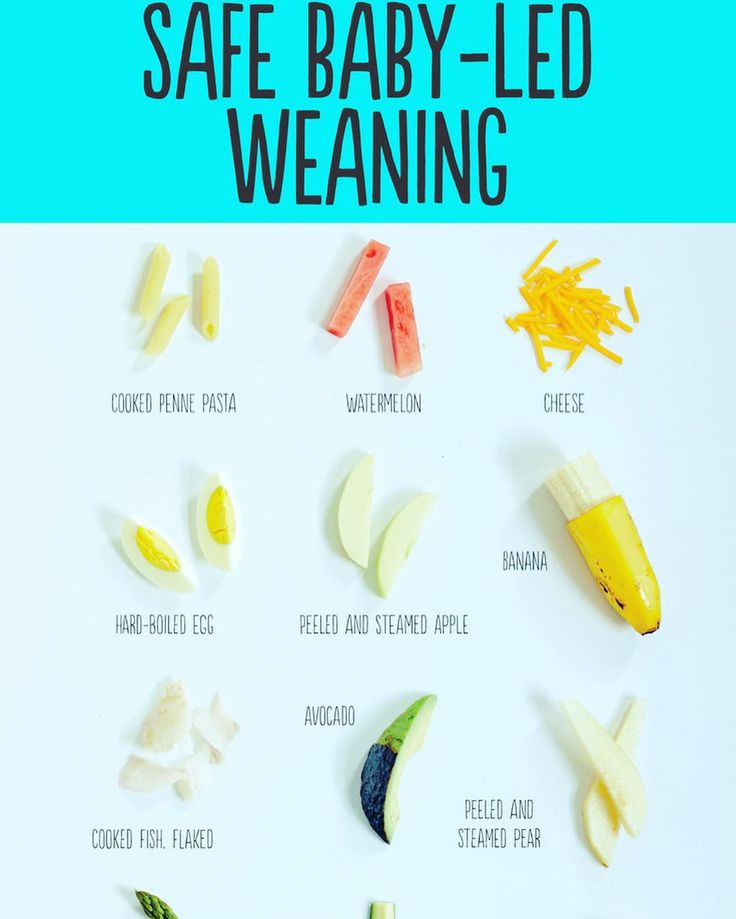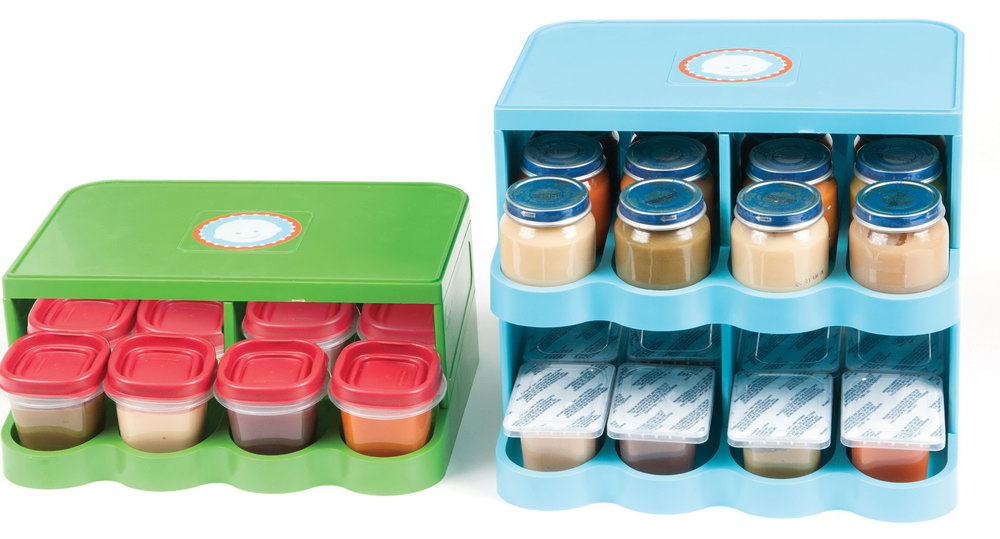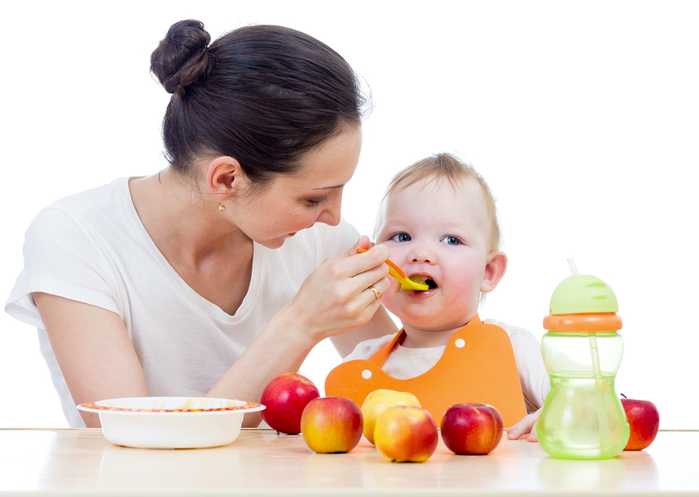Baby rejecting food
What to do if your baby is refusing solid food
Photo: Stocksy
The day after her son Ronan turned six months, Suzanne Ricard, a professor in Toronto, decided to start him on solid food. He showed all the signs of readiness: an interest in food, good head control and the ability to sit up and lean forward. He had also started picking food up from Ricard’s plate and trying to put it in his mouth.
But when Ricard offered Ronan his first spoonful of rice cereal mixed with breastmilk, he pushed it all back out with his tongue. She waited a week and then tried again—and again, he tongue-thrusted the food back out. So she experimented with different consistencies and temperatures. Oatmeal made him throw up; bananas left him blotchy; he gagged on eggs and flat out refused sweet potatoes, peas and butternut squash.
“At first we thought it was no big deal,” says Ricard. “But we soon started to worry that there was a physiological reason he couldn’t eat. ” As the weeks went by, Ronan seemed hungry all the time, wanting to breastfeed every two hours. Then he began losing weight. “That’s when I started freaking out,” says Ricard. She consulted Daniel Flanders, a Toronto paediatrician who specializes in infant and child feeding, and is the owner and director of Kindercare Pediatrics.
Why babies refuse solids Ricard had done everything right—doctors generally recommend starting solids when the baby is developmentally ready, which is usually somewhere between four and six months. And, she discovered, spitting out food is a common reflex in infants under six months. Gagging is normal and is often triggered by feeling food unexpectedly at the back of the mouth, which makes the body try to vomit. (It’s not to be confused with choking, a life-threatening condition caused when something blocks the air passage and restricts the ability to breathe.)
“It’s very common for babies to refuse food when solids are introduced,” Flanders says. “And it’s important to respect their decision to refuse it.” Never force your kid to eat. “Forcing sets up a power struggle around eating and can undermine the health of the feeding relationship,” Flanders says. Whether he refuses food or just seems uninterested, Flanders recommends giving your child a break of about a week before trying again. Eating, chewing and swallowing are not things babies are instantly good at, he adds—they’re learned skills.
“And it’s important to respect their decision to refuse it.” Never force your kid to eat. “Forcing sets up a power struggle around eating and can undermine the health of the feeding relationship,” Flanders says. Whether he refuses food or just seems uninterested, Flanders recommends giving your child a break of about a week before trying again. Eating, chewing and swallowing are not things babies are instantly good at, he adds—they’re learned skills.
Some doctors recommend baby-led weaning, which forgoes purées, allowing infants to control what and how much they eat.
How to introduce solid food There is no “best first food.” A good place to start is with iron-rich foods, such as fish, meat, eggs, tofu, legumes and iron-fortified cereal, because a liquid diet of breastmilk or formula alone may not provide enough of the mineral, especially by the time a baby is six months old. Although not all doctors believe in this practice, research in the Canadian Medical Association Journal recommends introducing new foods one at a time and waiting three to five days before trying another. That way, if your baby has a sensitivity or allergy to a food, it will be a lot easier to identify the culprit.
That way, if your baby has a sensitivity or allergy to a food, it will be a lot easier to identify the culprit.
The key is perseverance, says Ali J. Chernoff, a Vancouver-based dietitian and co-author of Good Food Baby and Good Food Toddler. “You can’t determine if your baby dislikes a particular food until it has been introduced at least 15 times,” she says. It’s often a texture issue, so try to provide a variety of consistencies. Chernoff recommends items that are tender-cooked, finely minced, puréed or mashed, as well as soft finger foods, such as bite-sized pieces of soft-cooked vegetables, mushy fruits like ripe banana, deboned fish and scrambled eggs. These are more consistent with a baby-led weaning approach to starting solids. Foods should progress in texture as the baby develops his oral motor skills, and portion sizes should be small.
When offering something new, it helps to use eye contact and verbal encouragement (not verbal or physical coercion), and to minimize distractions during meals and snacks. Don’t be tempted to put on the TV or trick your kid into taking one more bite.
Don’t be tempted to put on the TV or trick your kid into taking one more bite.
If your baby is still resisting solids at seven or eight months, chat with a healthcare professional. “Between six months to a year is when kids develop eating skills, and if they’re still refusing solids, they could miss that window,” says Flanders. “It’s more challenging to teach a child who is past one year old how to eat for the very first time.”
Ronan finally started accepting solids at almost nine months, beginning with strawberries. From there, it was rice cereal, bananas, apples and mango, turkey and vegetable soup. “He didn’t begin the way most babies do,” says Ricard, “but he’s eating and gaining weight well now.”
This article was originally published on Dec 09, 2016
Baby refusing to eat? 8 things to consider
In the midst of transitioning her baby to solid foods, a mama wrote to me with a challenging situation. At 6 months, her little boy started off eating pretty well. At 7 months, he wasn’t eating enough or was refusing to eat, to the point where he had fallen off the weight charts. She felt stuck trying to force calories into him, while knowing that experts recommend not forcing kids to eat.
At 7 months, he wasn’t eating enough or was refusing to eat, to the point where he had fallen off the weight charts. She felt stuck trying to force calories into him, while knowing that experts recommend not forcing kids to eat.
She tried to remove the obstacles she saw in the way. For example, her little boy had been so eager to see what she was eating that he wasn’t eating his own food. So she stopped feeding him at the family’s meal times. He would get fussy as soon as she made him sit in his high chair; he would make faces at his purees (even his favorite one). She tried distracting him with toys, but it didn’t work. He would try to grab the spoon, and she would try to get him to stop. “Then he signals me to come closer, he kisses me on my forehead, and then after sometimes starts to cry again,” she wrote. “This goes on for an hour or two. And mostly it ends with unfinished bowl of food.”
For both of them, meal times had become miserable, an obligation.
In the picture she painted, I saw that, inadvertently, meals had less and less connection. Children struggle when they feel disconnected, research shows us, and thrive when they feel connected. Beautifully, her little one was even asking her for more closeness in his sweet kisses. So we talked about how to build more and more connection around meal times.
Children struggle when they feel disconnected, research shows us, and thrive when they feel connected. Beautifully, her little one was even asking her for more closeness in his sweet kisses. So we talked about how to build more and more connection around meal times.
I know this dear mama is not alone on this issue. If your little one isn’t eating either, here are 8 tips to get you back on a better path:
1. Feed baby while the rest of your family is eating. People are social beings, and that feeling really comes out at meal times. Meals will instantly feel more enjoyable for your little ones when they are part of this family ritual — even if they don’t eat as much as you hope.
2. Get baby even closer to the table. If possible, get a high chair that allows your child to sit at the table, with her bowl on the table instead of a tray. There’s this design that clamps on or this one that slides directly up to the table. Most high chairs sit kids a little bit away from everyone else. But they want to do what everyone else is doing at dinner time, to feel part of the family. (I’ve loved having that second option. It’s so easy to clean and adjusts to last for years. As a toddler, my daughter got to feel independent by climbing into it on her own, but I also could trap–I mean, strap–her in for eating. She’s 4 1/2, and we still use it.)
But they want to do what everyone else is doing at dinner time, to feel part of the family. (I’ve loved having that second option. It’s so easy to clean and adjusts to last for years. As a toddler, my daughter got to feel independent by climbing into it on her own, but I also could trap–I mean, strap–her in for eating. She’s 4 1/2, and we still use it.)
3. Give baby the food that the rest of the family is eating. Purees are kind of boring, right? (And who came up with those, anyway? Interesting Atlantic interview on the history of baby food.) The dishes we tend to cook for ourselves have spices, textures, aromas, and colors that are much more interesting than purees. It’s great for babies who are starting on solids to eat real food: great for their motor control skills, their palate, their enjoyment of the meal, their nutrition, and more. Just give them smaller pieces. (No whole grapes, as these are slippery and just the right size and shape for choking.)
4. Let baby feed himself. By grabbing the spoon, baby is telling you, “I am ready to feed myself!” (Other signs of developmental readiness from Kelly Mom.) Let him use his hands. Yes, it’s messy! Bowls with a lip and long-sleeved bibs help contain the mess, along with a big mat under the high chair. (We snagged one of those big clear rolling-chair mats from my husband’s office–excellent.)
By grabbing the spoon, baby is telling you, “I am ready to feed myself!” (Other signs of developmental readiness from Kelly Mom.) Let him use his hands. Yes, it’s messy! Bowls with a lip and long-sleeved bibs help contain the mess, along with a big mat under the high chair. (We snagged one of those big clear rolling-chair mats from my husband’s office–excellent.)
Don’t look over every bite baby takes. Put the food on his plate and tell him what each item is. Then just occasionally talk with him, smile at him, and enjoy your own food. (Look up “baby led feeding” or “baby led weaning” for more information. Oh man, I can’t tell you how nice it is to relinquish the duty of trying to get a spoon into your kid’s mouth at every meal.)
Copyright Meryl Schenker5. Yes, baby is very interested in what’s on your plate. This will help you! You can feed your child with bites from your fork. You can say, “One bite for me, one bite for you.” Around this age, baby wants to do what you do. I remember my baby would want the food on MY plate, even if she had the same food on her plate! Sometimes I would put certain foods only on my plate instead of hers, and then give her some of mine.
I remember my baby would want the food on MY plate, even if she had the same food on her plate! Sometimes I would put certain foods only on my plate instead of hers, and then give her some of mine.
6. Sign language can be very helpful at this age. If you teach your baby the signs for words like “milk,” “more,” “all done,” “all gone,” etc., he will be able to communicate with you more easily. It’s such a relief! This is a great age to start. Here’s strstr(" target="_blank"", "class=") ? "" : ""a video of a few signs (start 30 seconds in). I lay out how to teach — the method researchers use — in my book, Zero to Five: 70 Essential Parenting Tips Based on Science.
7. Keep breastfeeding. Solid foods can come slowly. It’s healthy for babies at 6 months old to get most of their nutrition from breast milk, and slowly transition to only solid food over the next 6-12 months. Think of this as a time for baby to experiment with the new flavors and textures of solid food — not as a time to completely replace breast milk.
8. Make sure he’s getting enough greens / fiber. Babies may cry and not want to eat if they feel gassy or constipated. I used to make these green smoothies for my daughter — an easy way to get greens. Actually, we still drink those, but now she chooses which fruits and which greens. 🙂
Whatever plan you come up with, try it for a week. Let your little one adjust, and then assess how it’s going. And please let me know what happens!
Bonus download: Kids decide how much they eat + 5 other Rules for Feeding Kids
Like it? Share it!
8 reasons why a child refuses to eat
Our life is impossible without food. From birth, a child has an instinct for eating. And with age, he does not cease to understand whether he wants to eat or not. Therefore, forcing a child to eat on the part of the parents is wrong. If the child grows and develops normally, then let him eat what he wants and how much he wants. Forcing the baby to eat, you can easily break his natural sense of proportion, and then fight overeating and being overweight. All children are different and it is important to give the child the amount of food that will satisfy his needs. And these needs depend on various factors. If the little one refuses to eat, try to understand the reason for this behavior.
Forcing the baby to eat, you can easily break his natural sense of proportion, and then fight overeating and being overweight. All children are different and it is important to give the child the amount of food that will satisfy his needs. And these needs depend on various factors. If the little one refuses to eat, try to understand the reason for this behavior.
1. The child is not hungry. Even if a long time has passed since the last meal, it is possible that the child is still full. Parents should take into account the calorie content of food and the energy consumption of the child. If the meal was high in calories, but after that the child watched cartoons and did not run in the yard, then he may not want to eat for a long time. Physical activity encourages the body to expend energy and the child will get hungry faster.
2. The child does not have a daily routine. It is advisable to feed the baby at about the same time. The optimal portion for a child is two of his palms folded together. In addition, it is necessary that the child every day spend time in the fresh air and go to bed on time. If the child has little active pastime, then do not be surprised that he does not eat well.
In addition, it is necessary that the child every day spend time in the fresh air and go to bed on time. If the child has little active pastime, then do not be surprised that he does not eat well.
3. The child is ill. Lack of appetite may be a symptom of some disease. Many children begin to eat badly when they are teething. Often the child refuses food when he has a fever. Before forcing a child to finish eating porridge, make sure that he is healthy.
4. The child "interrupts" the appetite. Sometimes snacking can cause a child to eat poorly at lunch or dinner. Do not give any cookies or sweets if you plan to sit down at the table soon.
5. The child does not like a particular dish. The baby may not refuse food in general, but simply milk porridge or borscht. Everyone has their preferences and kids have them too. Consider your child's preferences when planning menus. Accustom the little one to new tastes gradually, in the same way as complementary foods were introduced. Children are reluctant to perceive new tastes, but if given often and a little bit, they get used to it.
Children are reluctant to perceive new tastes, but if given often and a little bit, they get used to it.
6. The child has psychological problems. Children subtly feel the psychological situation in the family. Refusal to eat may be associated with a desire to attract the attention of parents to their person.
7. The child developed an eating neurosis. If parents force the child to eat regularly, without taking into account his desire, then the baby may develop food neurosis. Such children begin to cry at the sight of a plate, they can run away to another room and become hysterical.
8. All children are different. Do not compare your child with other children. All have their own physical characteristics. If the baby eats little, just make these small portions as healthy and nutritious as possible, but do not force him to eat more than he wants.
Do not treat the refusal of food as disobedience and whims. Try to understand what the problem is and solve it. Think and analyze your behavior, did you do everything as it should? If you realize what you did wrong, then try to quickly correct your mistakes. Use methods such as fairy tale therapy. Before going to bed, the child will listen with pleasure about his favorite fairy-tale hero, who ate well, so he was strong and courageous. Try to interest the child in the beautiful design of the dish. Ordinary products can become a castle, a car, a cute face - there is room for parental imagination to roam.
Try to understand what the problem is and solve it. Think and analyze your behavior, did you do everything as it should? If you realize what you did wrong, then try to quickly correct your mistakes. Use methods such as fairy tale therapy. Before going to bed, the child will listen with pleasure about his favorite fairy-tale hero, who ate well, so he was strong and courageous. Try to interest the child in the beautiful design of the dish. Ordinary products can become a castle, a car, a cute face - there is room for parental imagination to roam.
If the child does not eat well: what to do and what not to do
What to do if the child does not want to eat.
- Malyusik, well, one more spoon - and that's it! Last! I ate only two, let's have a little more, here's the most delicious piece for you! - says the average mother, offering a spoon with one hand, playing the accordion with the other, showing the trick with the disappearance of the handkerchief with the third, turning the cutlets over with the fourth, while doing somersaults on one leg.
Sound familiar?
Every dad has an instinct to bring home food, and mom has to feed the baby food. And if he refuses to eat, a signal is triggered - "I'm a bad mother" or "the child is sick."
In this case, the most important thing for a parent to understand is whether the child DOES NOT WANT or CANNOT eat?
If the baby is running around, having fun and looking good, without showing any signs of illness, then most likely he does not want to eat. There can be many reasons:
- A breastfeeding child prefers milk and dairy products, intuitively understanding that he needs calcium, and now milk is healthier for him than soup.
- The child wants a cookie, not vegetables.
- He's really not hungry. For example, his metabolism is slow, breakfast has not yet been digested, and lunch is already being offered. Or the child was sitting in front of the TV after breakfast and his appetite had not yet had enough time to play out. Compared to the boy next door who was outside all day.

- If a child is not genetically destined to become Uncle Styopa, then he can eat much less than his peer, who has tall parents.
- Psychological problems. If earlier you accidentally gave your child a bitter cucumber, then he may refuse any green food. Or you yell at the child during the meal, and for him the food is perceived as a trauma.
If your child is lively, but at the same time he has a "bad appetite", then this is not his problem, but yours - the psychological problem of an unsatisfied instinct. If a child jumps, jumps, he has healthy nails, hair, etc., think less about what he lacks. Better think about something nice))
An active child = not a hungry child.
Wait for the natural desire and correctly distribute energy costs - walk more often, send the child to the sports section, or simply say: “If you don’t want to, take a walk, dinner is not earlier than seven and no snacks.” That is, if your child simply does not want to eat, normalize feeding - strictly at a certain time and without snacks. The body will get used to secrete gastric juice strictly according to the schedule.
The body will get used to secrete gastric juice strictly according to the schedule.
And one more thing. There are no rules about how much a child should eat. He can eat a kilo (and make you very happy) and 9Send 00 grams to the toilet. Or eat 100 g and learn everything.
But it is much more difficult if the child CANNOT eat.
Causes:
- If you are breastfeeding, you may have “tight breasts”, when it is very difficult for the baby to suck milk.
- A child has a runny nose, and when he eats, he begins to choke.
- Food hot, cold, sour, bitter.
- He has sores in his mouth (for example, from toys), and they hurt when food gets on them.
- Teeth are cut, gums hurt.
- Bowel problems. The stomach starts to hurt while eating.
- The child simply fell ill (cold, SARS, poisoning, influenza, etc.). If the child is sick, and he is not dystrophic, then you should not force him to eat. The body fights infections better when it's hungry.












